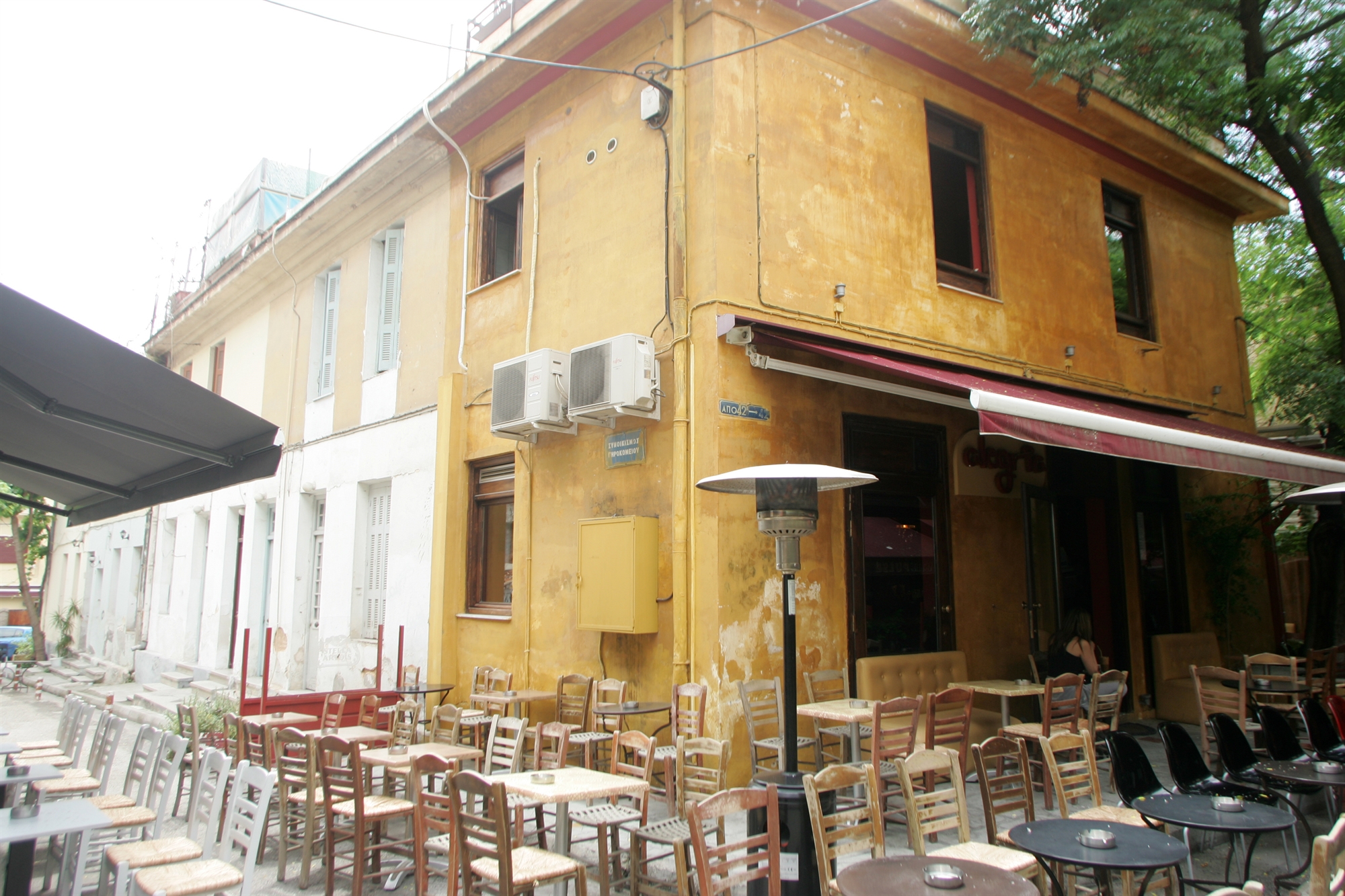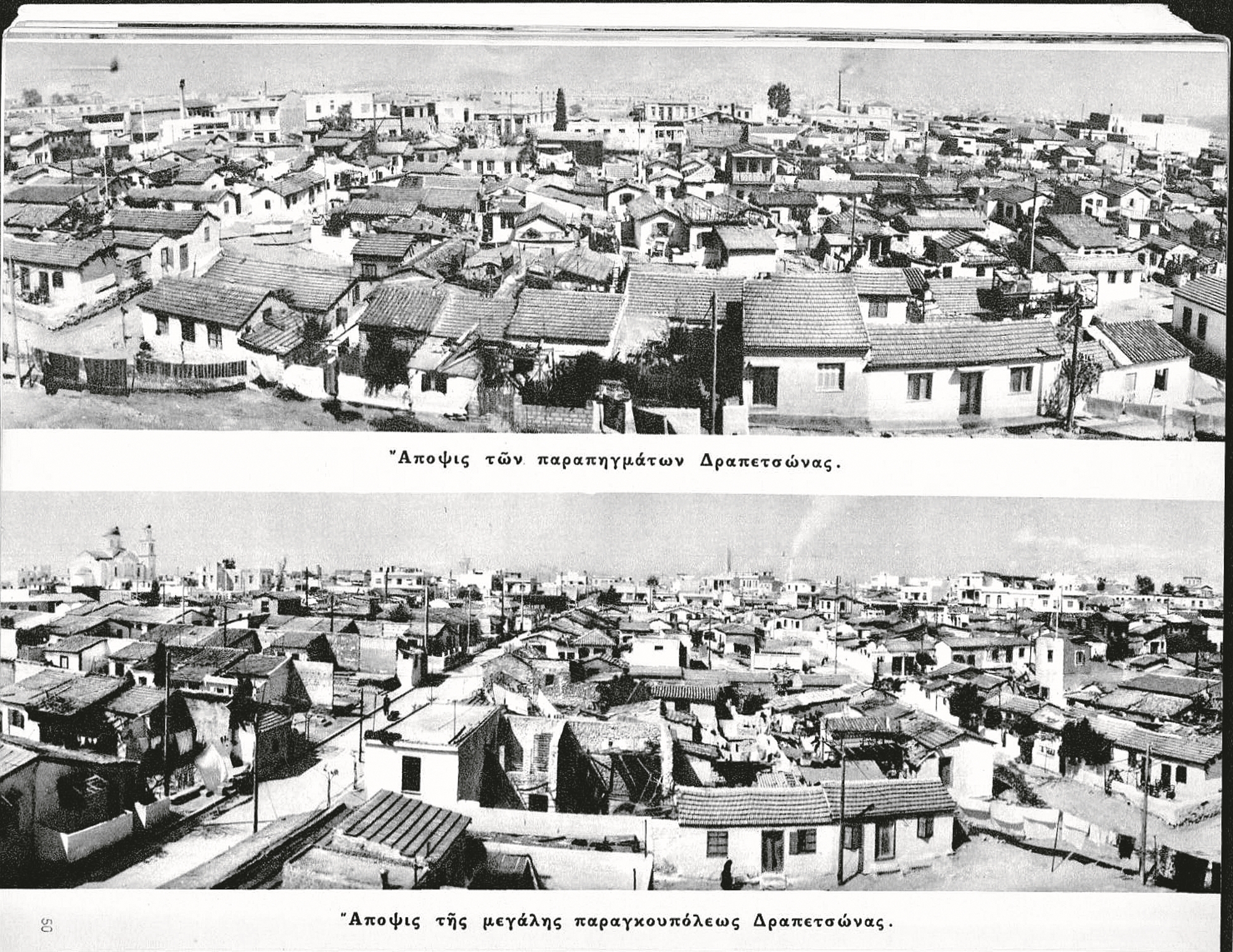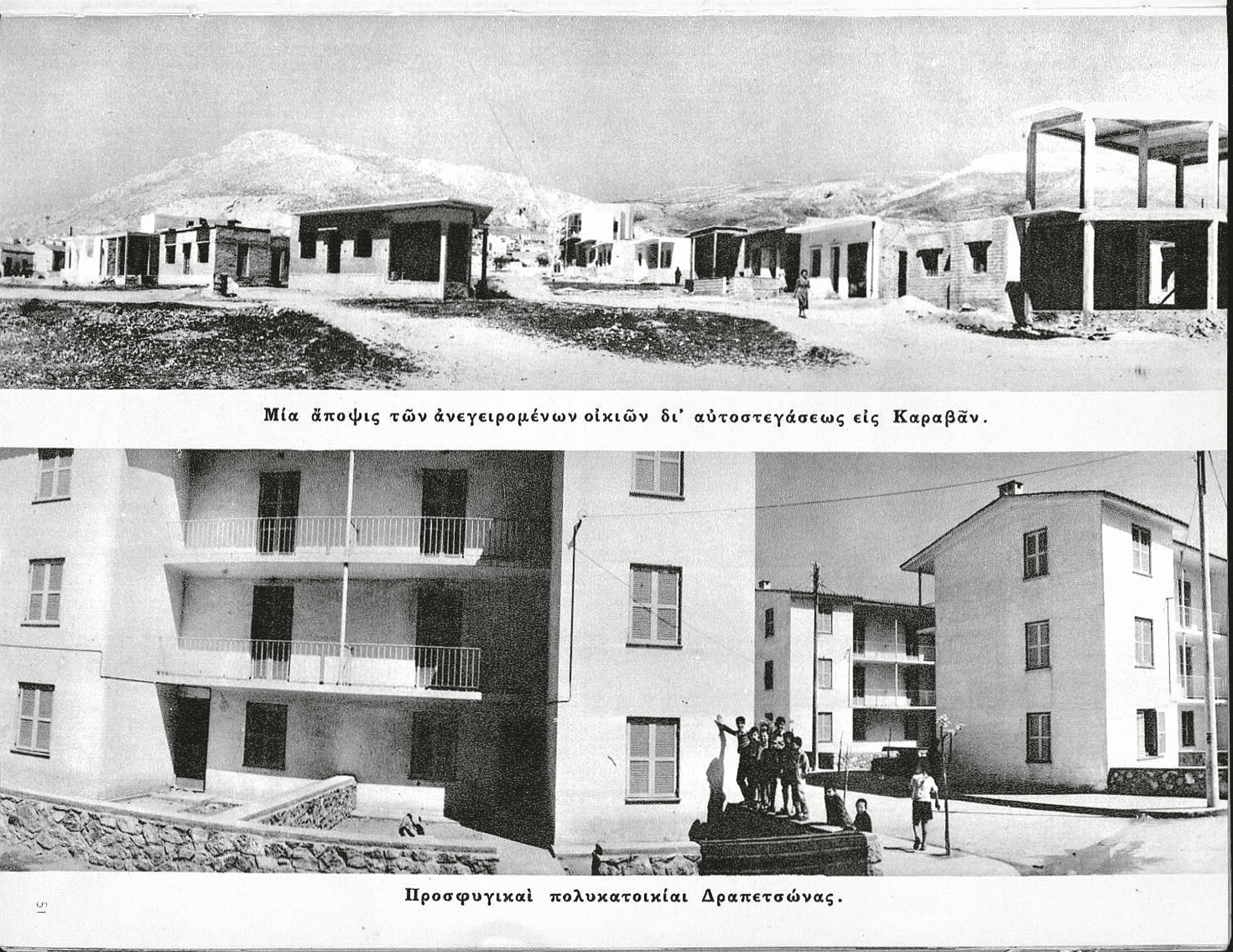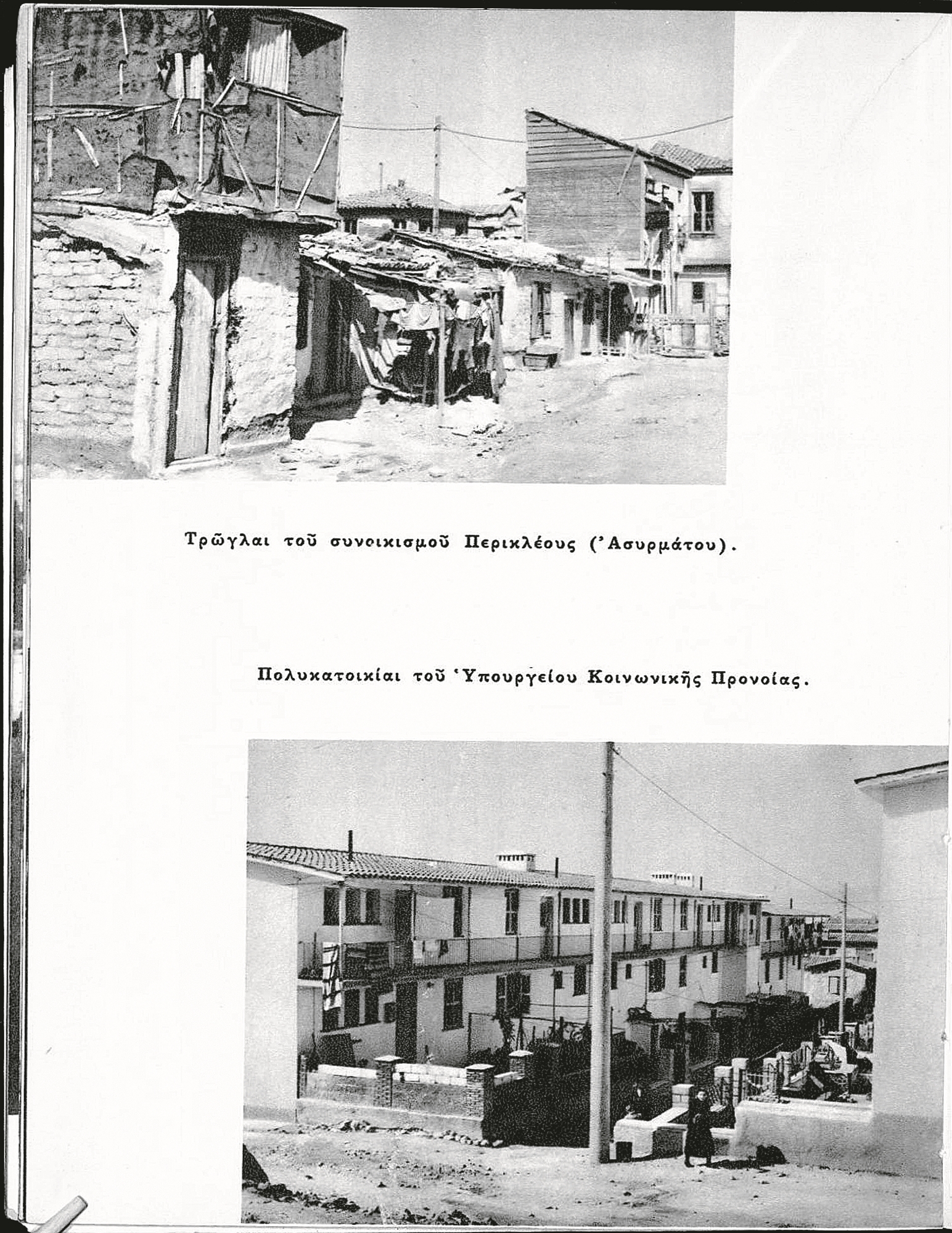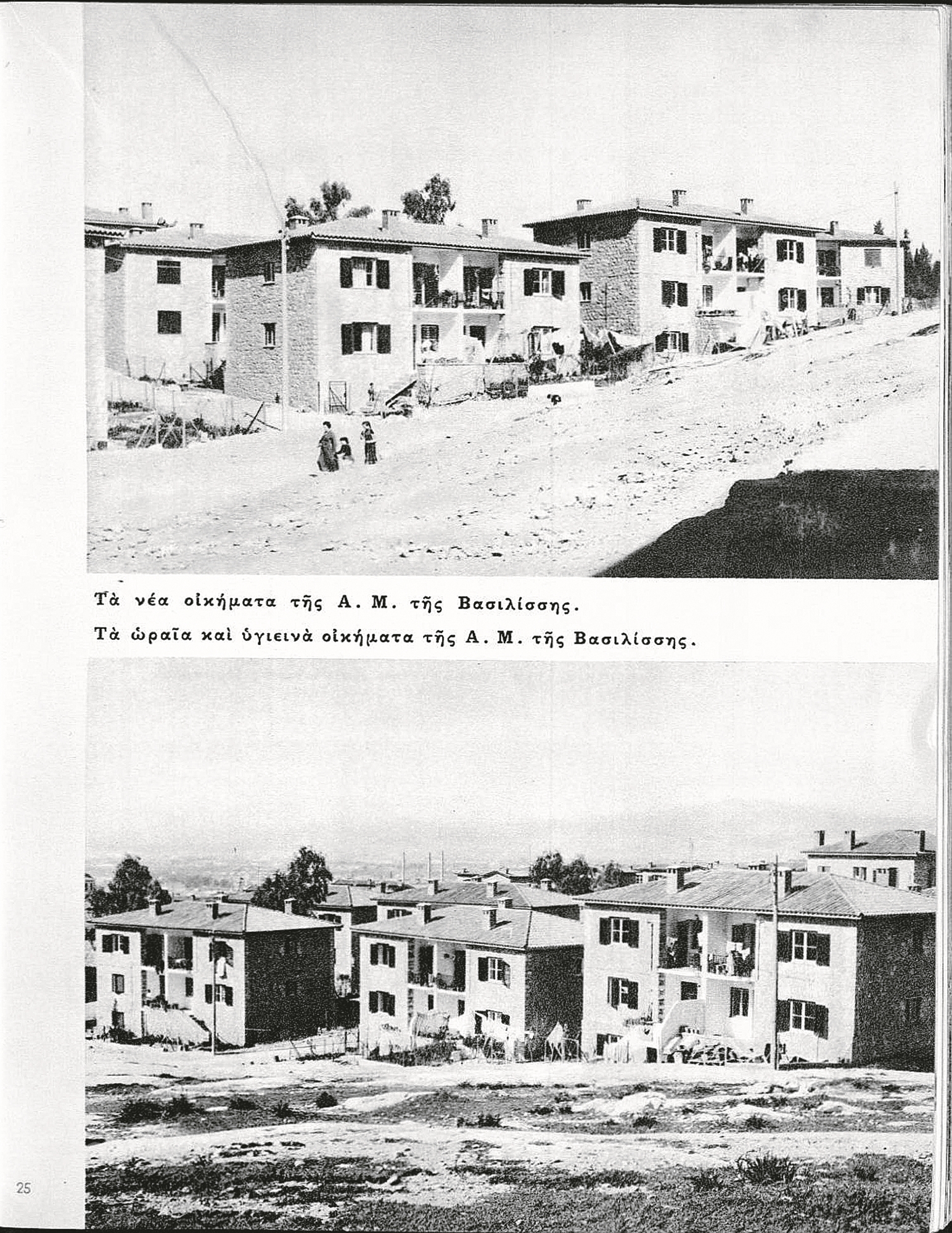The shantytowns of the 1920s that grew into a city
Greek-Turkish study examines the impact of having to house displaced populations

Patrons of the Zefyros open-air cinema and the classic family taverna Oikonomou in Petralona may have trouble imagining that until the early 1960s, this part of the hip Athenian neighborhood was the shantytown depicted in the emblematic drama “Synoikia to Oneiro” (“A Neighborhood Named The Dream”), directed by and starring Alekos Alexandrakis. Even further back, in the 1920s, it was an abandoned quarry on the slopes of Philopappou Hill until it became home to more than 800 families of refugees fleeing Attaleia (present-day Antalya) and Alagia (Alanya) in Asia Minor.
When the film was shot in 1961 – with the residents being cast as extras – many of the makeshift houses that were cobbled together to meet the sudden need for accommodation caused by the refugee influx were still around.
However, a government plan to build a large number of decent homes made with stones from the demolished War School, and particularly the construction of the famed modern apartment block designed by Elli Vasilikioti on the Philopappou ring road in 1967, marked the end of a housing crisis in this particular Athenian neighborhood that had lasted nearly half a century.
Similar histories of refugee settlements form the focus of “Space, Memory and the Legacy of the 1923 Population Exchange Between Greece and Turkey,” a joint Greek-Turkish research program.
Also known by the more succinct title “Ηomeacross,” the program studies the urban and architectural dimension of this massive population shift, which transformed both the places left behind and the places where the refugees landed. The challenge of absorbing this sudden influx from Asia Minor was not something that lasted a decade or even a generation; it was a process that stretched across much of the 20th century, leaving a powerful imprint on the architectural, zonal and social evolution of the cities, towns and villages where these denizens settled.
The project also marks the first time that Greek and Turkish researchers (mostly architects, but also historians, political scientists etc) associated with three different institutions on both sides of the Aegean (the Hellenic Foundation for European & Foreign Policy, the Center for Asia Minor Studies and the Izmir Institute of Technology, which is an English-language public university) have joined forces to study the long-term effects of such an emotionally charged historical event on the urban environment.
The first fruits of their labor can be found on homeacross.eliamep.gr (a trilingual website that is constantly updated with new information), but also in a major exhibition being hosted at the Benaki Museum’s Pireos Street annex (benaki.org) through February.
The work being done by the team, whose core is made up of six Greeks and four Turks, focuses on the impact of the population exchange on two administrative regions: Attica and Izmir. Carrying out extensive field research in the villages of Izmir and the neighborhoods of Athens and Piraeus, studying archives in both countries and speaking with the descendants of refugees, the team has charted a fascinating “map” full of differences but also similarities.
Intensity of the crisis
‘Many Greek properties were being looted, while compensation claims were also being filed by locals whose homes were in the sphere of the conflicts from 1919 to 1922’
The biggest difference between the two regions was, of course, the intensity of the crisis, which is demonstrated not just in the hard numbers (under 400,000 Muslims were “exchanged” for over 1.2 million Greeks), but also in how acute the housing challenge was. The Muslims moved mainly to villages that had been abandoned by Greeks; the Greeks, however, had to start from scratch, as there were no houses ready for them to move into. According to Athens municipal records, by early December 1922 there were around 70,000 refugees living in 130 makeshift camps spread out across the city.
“While Greece was having to plan and build hundreds of new settlements, Turkey needed just a few dozen,” says architecture historian and project head Kalliopi Amygdalou. “That is not to say the Turks did not have problems. Many Greek properties were being looted, while compensation claims were also being filed by locals whose homes were in the sphere of the conflicts from 1919 to 1922. This created a kind of competition for resources between two different population groups. Instances of corruption had also been recorded: people who were not refugees claiming houses owned formerly by Greeks and ending up with the rights to two or even three new properties.”
In Attica, however, refugees had only three avenues for finding semi-permanent or permanent accommodation: via organized programs carried out by the state, by building their own house without a license and with any means available, or by finding suitable existing accommodation on their own. The 1928 census reveals the magnitude of the issue: The province of Attica had 271,478 refugees, with the municipality of Athens accommodating 129,380 (or 28% of its total population) and Piraeus 101,185 (40.2%).
The first tough decade was marked by a rush on the part of the Refugee Settlement Commission (EAP) to build basic accommodation units. These consisted of tiny, single-room, ground-floor houses – prefabricated wooden boxes, basically – or, at best, two-story structures of four such units each, usually crowded around a central courtyard. Each room was a small kernel installed by the state with the reasoning that the refugees would find a way to build on it. “The state essentially endorsed emergency architecture, basic survival infrastructure (without water and sewage systems),” notes Amygdalou. By 1930, EAP (which was established in 1923 on a loan from the League of Nations) had built 6,782 residences in Athens and 5,134 in Piraeus, which corresponded to 43.2% of its total nationwide refugee settlement activities.
The picture changed in the second half of the 1920s when a new law was passed in 1927 allowing higher buildings, though only for refugee settlements. The measure lifting restriction on horizontal construction was expanded to the entire country two years later, paving the way for the first apartment buildings. It is safe to say that pressure to address the housing crisis precipitated zoning and legislative initiatives that would have otherwise taken several more years to transpire. Another landmark law was passed in 1929, encouraging private initiative by allowing construction cooperatives.
What it effectively amounted to was that the state provided land plots or some financial support to refugees who formed cooperatives and took on the responsibility of building their own neighborhoods. By 1933, some 10,500 refugees had joined forces in forming more than 320 building partnerships. Apart from the new law, they were also spurred on by the signing of the Greek-Turkish Friendship Agreement in 1930 in Ankara by Eleftherios Venizelos and Ismet Inonu in the presence of Kemal Ataturk, which dashed any hope they had of returning to their native lands.
As a result of these developments, the 1930s were marked by a building frenzy and by 1940 the city had acquired some of the most ambitious housing compounds of that era, such as the refugee apartment blocks on Alexandras Avenue, designed by eminent architects and embodying the spirit of the burgeoning modernist movement.
This boom was not always painless, however, stresses Amygdalou, citing the example of Drapetsona. “The area had started being zoned for construction and land was being sold and bought on the border between the two districts before 1922 as pressure to expand Piraeus west had been building up for some time. But the arrival of the refugees led to a massive shantytown suddenly cropping up, forcing the state to expropriate the land, to the intense reaction of the investors who were impacted. Hundreds took recourse to the courts, with many of their cases dragging on for decades before coming to some sort of conclusion,” she explains.
‘A lesson for all’
I ask Amygdalou what, in her opinion, was the greatest legacy of this epic endeavor of integrating the refugees from Asia Minor. She points to social housing and the importance of the welfare state, a role that was poignantly brought back home recently by the pandemic.
“The conversation on how Greece dealt with the issue of the refugees has become topical and valuable once more after the pandemic and now the energy crisis served as reminders of the demise of the welfare state over the past few decades,” she says.
“The story of the settlement of those refugees is, therefore, very much the story of social housing in Greece. And this is an important part of the history of its infrastructure, its modernization and the welfare state. It is an important chapter in the history of technical services, too, meaning in the synergy between state and architecture for urban interventions. It is a lesson for all,” she adds.
